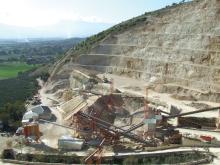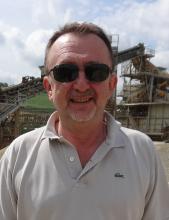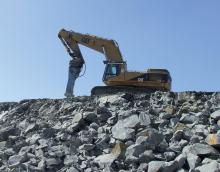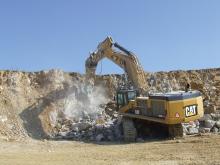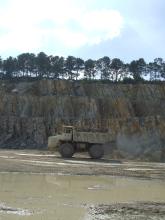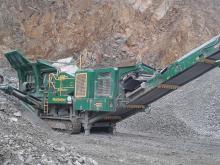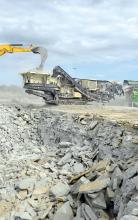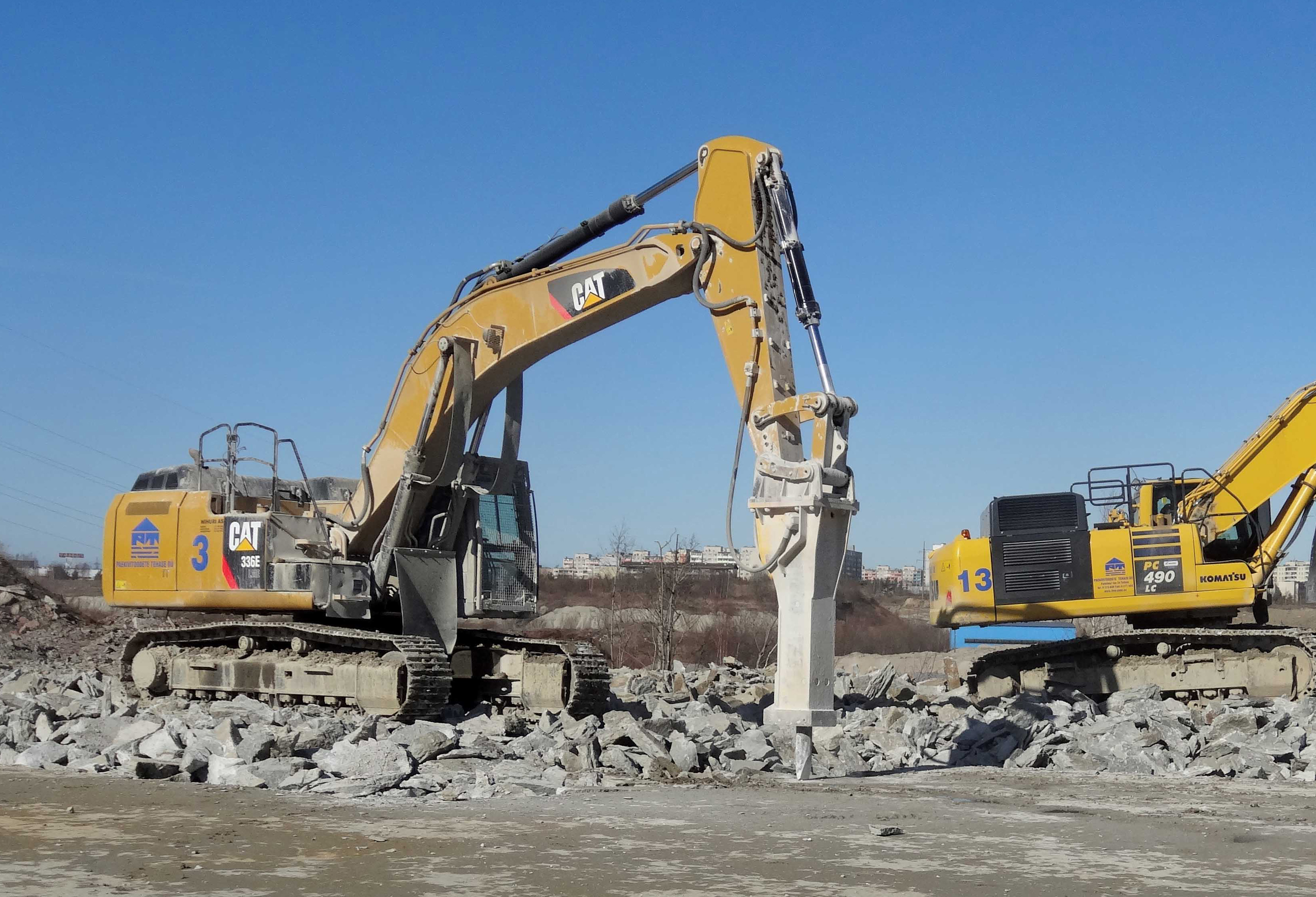
An Estonian quarry’s decision to switch to Caterpillar excavators for rock breaking and loading and hauling applications is said to have led to big fuel efficiency gains and healthier profitability, as Guy Woodford discovers.
With a large residential housing area, a city ring road, electric power lines and gas pipelines less than 100 metres from PTT’s Väo quarry in Tallinn, Estonia, the past 20 years has seen the company using hammers rather than blasting in order to gain the vast majority of its limestone.
Up until 2013, Paekivitoodete Tehase OÜ (PTT) board chairman and majority company shareholder Vladimir Libman and his fellow management team had used a variety of leading OEM excavators and breakers at the Väo site, which produces around 600,000 tonnes/year of limestone.
However, Libman says that the Estonian government’s decision in 2012 to end tax free fuel for quarrying instantly made fuel his biggest cost – around 25%-30% of operating costs.
Left urgently needing to find excavators offering lower fuel consumption than his present models in order to keep PTT in sound financial health, in early 2013 Libman decided to once again look at what
After a meeting with representatives from Wihuri, Caterpillar’s Estonian dealers, at
“We have seen a 10-12% reduction in fuel consumption compared to our non-Caterpillar excavators,” says Libman, whose 56-year-old firm’s quarried limestone is mainly sized 4-16mm, 16mm-32mm, and 32-64mm, with its healthy customer base including concrete industry firms and contractors for Estonian highway and other transport projects.
So impressed was Libman with his 336 ME excavators, in April 2014 he purchased a Cat 336E H hybrid excavator, followed by a Cat 962K wheeled loader in December 2014. The 336E H model is also said to have delivered another significant fuel saving for Libman’s operation.
Wihuri estimates that across his four-strong Cat excavator fleet, Libman and his PTT colleagues will save more than €100,000 a year in fuel costs. The dealership also points out that the 336 ME and 336E H excavators’ idling time has been less than 10%, compared to an average of 30% with some of the other excavator models.
Used with 3tonne
“There has been a big change in that for many years when we were using a 3tonne hydraulic hammer, we had to attach it to a 40tonne plus excavator. Then smaller excavators became more powerful and were comfortable with that sized hammer. This is another reason why smaller machines, like the 336 ME, became of interest to us,” explains Libman. “Of the four excavators we now have working with the hammers, three are the Cat 336 ME models. From April 2015, we will be working with five excavators with hammers attached. I see the choice of equipment and technology as being like a marathon more than a sprint. Leading the marathon on excavators is Caterpillar.”
EXCAVATORS
3 x Cat 336E ME
1x Cat 336E H
2 x Komatsu PC450-7
1x Komatsu PC450-8
1x Komatsu PC490-10
WHEELED LOADERS
1 x Cat 962
1 x
2 x Volvo L120H
1 x Komatsu WA430
DOZERS
2 x Komatsu D155
2 x Soviet dozers
HAULING
7 x
CRUSHING & SCREENING
4 x
BREAKERS
3 x HM3100 Atlas Copco
2 x HM3000 Atlas Copco
Washing
1 x
Libman stresses the importance to PTT of the Wihuri dealership’s product support. “We are really happy with this. My previous opinion was that another OEM offered the best product support, but now I think Caterpillar do. A very important part of this is the support offered by the manufacturer to the dealership.
”Down at Väo quarry during Aggregates Business Europe’s recent visit, Aleksandr Dvizov, PTT’s most experienced excavator operator, is busy operating one of the Cat 336 ME’s breaking rock with its 3tonne hydraulic hammer alongside a colleague doing the same in a
Jan Berkovitch, Estonia product support manager at Wihuri, says that although Caterpillar is “one of the preferred players” in the Estonian quarrying equipment market, he is candid about how construction equipment sales in the country remained depressed, with a 30% decline in sales in Estonia and neighbouring Latvia combined in 2014, partly due to the continuing challenging economic climate throughout most of Europe.
However, Berkovitch says that big infrastructure projects earmarked for Estonia and its neighbouring countries could give equipment sales a major boost. “There are serious discussions going on about a ‘Rail Baltics’ project. This would involve a rail line from Tallinn down to Lithuania’s southern border with Poland, a distance of more than 700 kilometres. There’s also been big interest from Finland in an 80 kilometre underground rail tunnel from Helsinki to Tallinn. They see it as a great way of getting closer to Europe without having to fly. The first of the two projects is more likely, though, given how difficult it will be to drill into the tough granite underwater along some of the underground rail tunnel route.”
Meanwhile back in his office near Väo quarry, an animated and fast talking Libman, whose company also operates the 100,000tonnes/year Maardu quarry in north Estonia, has some strong views on how PTT’s future prospects and those of other Estonian quarrying businesses can be significantly enhanced.
“The biggest issue today is who will be dealing with environmental issues within the new Estonian government after the recent elections. The current taxation on mineral production is one of the highest in Europe. Within ten years the tax you pay on the aggregates you produce has increased by 400%. It’s roughly 13-14% of our entire costs.
“Also, due to the government’s actions, after 11 years of trying to open a new quarry near Tallinn, where the mineral consistency is the best in the area, we are still no further forward on this today. All this has to stop.”

